- Brown Malt Guide - December 15, 2022
I choose fruity and tart beers over an easy pale ale, so my fridge is stocked with Leffe Ruby come spring and Berliner Weiss on hot summer days.
As fall rolls around, I look forward to finding a dimly lit pub with Fuller’s London Porter on tap. Obviously, I opt for an imperial stout come winter, but that’s what we all do to survive the cold, right?
Fall is by far my favorite season, simply because crisp air and a smooth porter with fish and chips are an unbeatable combination. My favorite fall staple was made possible by the use of the malt featured in our Brown Malt guide.
Bottom Line Up Front
Brown malt has been forgotten over time, but there are many reasons to continue incorporating it into our favorite dark styles. Brown malt is roasted and slightly bitter, with a coffee aroma and rich brown color. I love brown malt because it does not have to produce a heavy result to pack a punch of flavor.
The use of brown malt can be seen throughout the history of beer, and it is fascinating to understand why its use became less prevalent. Transport yourself back to the 1700s and brew a traditional porter using brown malt!
Try a Brown Malt Brew
Brown malt became less common due to the lower output of fermentable material, turning brewers to pale malt. Today, one of the only surefire mainstream beers known to use brown malt is the award-winning London Porter by Fuller’s.
This English porter has a 5.4% ABV and incorporates other malts, such as crystal and chocolate. The creamy body has notes of coffee and chocolate, and with just one sip, you’ll understand why this became the favorite beer of brewers in the 1700s.
History of Brown Malt, Porters, and Stouts
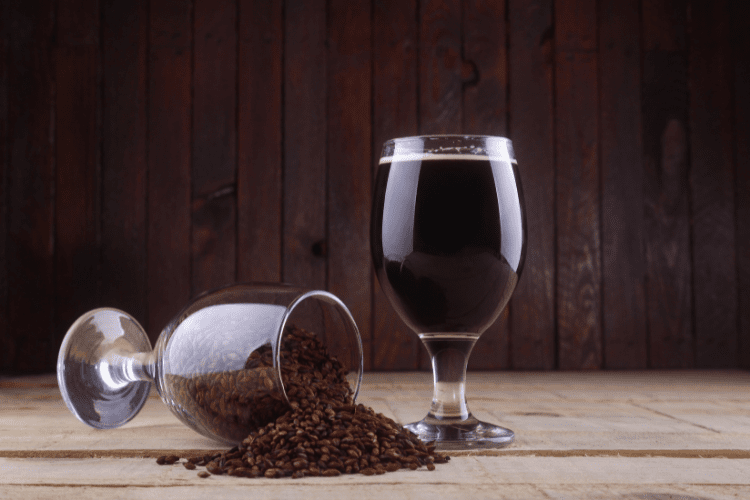
Being a beer lover has to do with so much more than even just liking beer; it involves understanding and appreciating the history that surrounds it.
Brown malt has a rich history (and flavor) that dates back to the creation of the porter and the stout. Brown malt is named for the malt’s rich color and the color of the beer it produced.
Humans have been consuming the deliciously dark porter for about 300 years. The first record of a fermented dark malted barley ale, more commonly known as the porter, dates back to the early 18th century, around 1722. The use of very dried brown malt is responsible.
The creator of the porter was a gentleman from London named Ralph Harwood. Ralph’s overall goal was to brew a beer containing one-third of the following components: beer, ale, and strong beer. He proclaimed that this beer should be called “Entire” for its unique blend of ingredients.
As the popularity of this brown beer grew, it received the nickname “porter” because dockside porters and London’s working class frequently enjoyed a pint once their duties were done for the day.
Over time, the brown malt faded into the background as the pale malt appeared. Pale malt was cheaper to make and more productive than brown malt at producing more extract per pound.
In addition to those two huge competitors, increased taxes were placed on poor ole brown malt from 1789-1799 during the French Revolution. But before that point in time, the porter was born.
In 1817, a man named Daniel Wheeler mastered the technique of roasting malt at high temperatures, and black malt was the product.
This was achieved by exposing the malt to a heat of 400 degrees. In brewing, this meant a beer could be made black in color with only a small amount of malt, and cheap pale malts were used to complete the flavor.
Porters vs. Stouts: What’s Really The Difference?
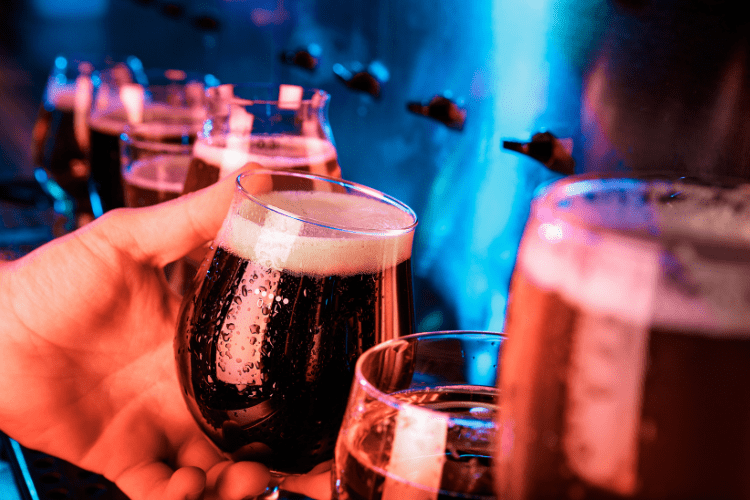
There are a few distinct differences between these two similar beer styles, but the origins of each are so similar that it’s easy and common to confuse them. It is only recently that the differences between these two styles have been such a conversation.
As porters evolved, many variations were brewed. Each brew had different attributes, but many were strong and dark. The word “stout” was used to refer to these strong porters and along with it came “extra stout.”
In 1776, Ireland discovered the porter. Guinness was inspired by the subtle undertones and incorporated similarities into their beer, although they utilized pale male and black malt to achieve the dark burnt flavor you know and love today.
When it comes to differentiating a porter and a stout, our best resource is the Beer Judge Certification Program which defines each as follows:
- Porter: “A substantial, malty dark beer with a complex and flavorful dark malt character.”
- Stout: “A fairly strong, highly roasted, bitter, hoppy, creamy ale.”
Today, we differentiate porters and stouts by their use of ingredients. Porters are brewed using malted barley to establish their complex flavor of chocolate, toffee, and roasted grains. Stouts are made primarily using roasted, unmalted barley.
To malt a beer, barley germinates by soaking in water and ferments. This process releases the signature flavors achieved.
Porters are typically lighter in color, alcohol content, and body. Stouts are thicker, stronger in ABV, and bitter.
These beers are often grouped together due to their close historical ties; many can be difficult to differentiate. Next time a beer gatekeeper tries to quiz you, be sure you tell them just how closely interlaced the roots of these delicious beers are… or you could ignore them and continue enjoying your beer 🙂
Old Ales
Perhaps the truest use of this malt is in old ales. These dark and malty beers fall around 5% ABV and are frequently associated with England. You can try many modern old ales…as contradictory as that may sound, hundreds of delicious choices are available.
The high amounts of dextrins in the ale deliver a malt-forward body. The process of brewing these beers included transferring the liquid into vats where it would age or…become old. These appear almost entirely black and vary when it comes to bitterness.
Top rate old ales to try this fall and winter:
- Curmudgeon by Founders Brewing Company
- Old Stock Ale by North Coast Brewing Co.
- Hibernation Ale by Great Divide Brewing Company
- Fourth Dementia Bourbon Barrel-Aged by Kuhnhenn Brewing Company
- Olde Ale by AleSmith Brewing Company
- Vintage Ale by Fuller’s
- Old Peculier by T & R Theakston Ltd.
- Winter Ale by Alaskan Brewing Co.
- Old Jubilation by Avery Brewing Company
The Original Malting Process
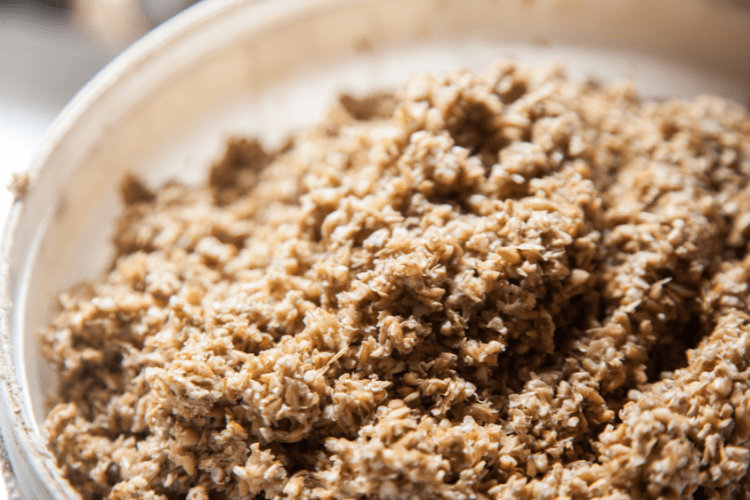
Okay, so we’ve cleared up the differences between these two styles, but what’s the difference between the barleys used? Porters are made using malted barley, while stouts are made using roasted barley.
The key difference here is the malting process. While the grains are the same, the method by which they are processed is not. Roasted barley is not malted before being kilned, a process that removes moisture and enhances the character of the grain.
Before the process was industrialized, malting was done manually. Brown malt began as green malt that was removed from the germination floor.
Flooring or floor malting is a traditional method for producing malt. While this practice is less common today, it involves placing steeped and hydrated grain on a stone floor where it is spread six inches thick and evenly across.
From there, the grain is turned with a nearly 70-pound iron malting rake and wooden malt shovel twice a day until the ideal germination stage has been reached. Following flooring, the malt is sent to the kiln to be dried at temperatures around 185 degrees Fahrenheit.
Next, the malt is “blown,” a process that amplifies the flavor of brown malt. Bundles of oak, beech, straw, or hardwood raised the kiln temperature to 200 degrees Fahrenheit. As the remaining moisture left the grain, steam caused the kernel to puff up.
The labor intensity and fuel needed to accomplish this particular malting process meant it was expensive. Additionally, the process reduced the amount of extract procured by nearly 20 percent. On top of it all, the imposed levies made it an unsustainable option when compared to pale malt.
Artisan brewers can still be seen using this malting method, but it is mostly uncommon due to the efficiency and affordability of modern machinery.
Since everything from the stone floors to the malt rake is held to a specific standard to achieve consistency, it’s a big task to recreate, but some brewers prefer to keep things traditional. This antique practice produces much more flavorful malt than modern malting, so we can’t blame them.
The Advantages and Disadvantages of Brown Malt
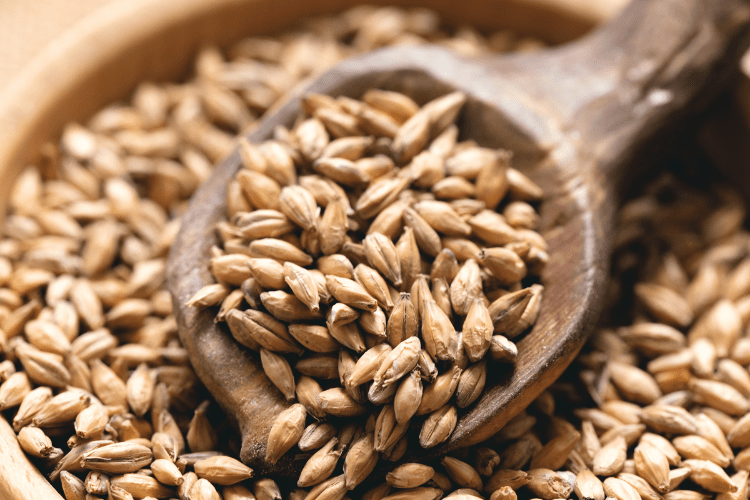
Advantages
- Brown malt adds a unique flavor, depth, and color to a stout or porter
- It is the primary malt needed to replicate a London Porter
- It can be used to balance black malt
- 4 ounces of brown malt is a great secret weapon in any Vienna lager or Czech pilsner.
Disadvantages
- Brown malt takes longer to ferment.
- It can mostly only be used for medium-bodied malty beers.
- One large bag of brown malt will last a very long time, usually due to the limited amounts used in each brew.
Using Brown Malt
If you’re looking to brew an authentic English brown ale or play around with other dark beers, incorporating brown malt into the mix is a game changer. Anywhere from 2 to 50 percent of brown malt can be used when producing a British brown ale or Lonon porter clone.
The rich roasted flavor is unmatched, and the subtle notes of coffee are smooth without any bitterness. Brown malt is also great to incorporate into an American brown ale recipe. With its long history, it seems only right to use it in traditional brews.
Unfortunately, brown malt is typically forgotten or overlooked even though it adds significant depth and aroma to dark beers.
As I’ve scanned the internet looking for ways to incorporate brown malt into my existing recipes, I came across a few folks that even add small amounts of brown malts to their saisons.
Brown malt can be incorporated into beer ranging from mild to dark. Think about using it in your next amber if you want to amplify the color and flavor. When used with black malt, you may want to increase the amount of brown malt to combat astringent tastes.
Well-known author and brewer Randy Mosher shared in his book Mastering Homebrew that brown malt can be used up to 80% when brewing historic porters.
Brown Malt Analysis
- Color: 46-56 ºL
- Moisture Content: 2.0%
- Extract: 72.8%
- Total Protein: 11.6%
- Usage: Varies by brand, Typically 5-15%
How Is Brown Malt Different Than Other Dark Malts?

Since the use of brown malt was replaced in the brewing process due to steep taxes during the late 1700s, a few cheaper yet comparable malts became commonly used instead. Learn how to recognize the difference between them!
Amber Malt
Often called biscuit malt due to the toasted finish. Amber malt is a traditional British malt used for its flavor. Amber malt is commonly used in brown ales, stouts, porters, and old ales. Amber malt has a crisp dryness without the sweetness that brown malt brings forward.
Chocolate Malt
Chocolate malts and pale chocolate malts are more frequently used for porters and stouts than brown malts are these days. Chocolate malt features a rich coffee flavor, though, not chocolate.
You will notice that chocolate malt is typically less bitter than roasted barley, and it is easy to sniff out in oatmeal stouts and porters.
Pale chocolate malt does indeed have a milk chocolate flavor. If your goal is to create a sweet stout or imperial, then pale chocolate malt is a wonderful addition.
Black Malt
Black malt is often described as having an astringent or burnt flavor and is used for color, flavor, and aroma. The roasting temperature needed to achieve the black color means that it does not have enzymes and produces no fermented extract. Roasted barley is typically used in conjunction with black malt to aid the flavor.
Brown Malt Storage Guidelines
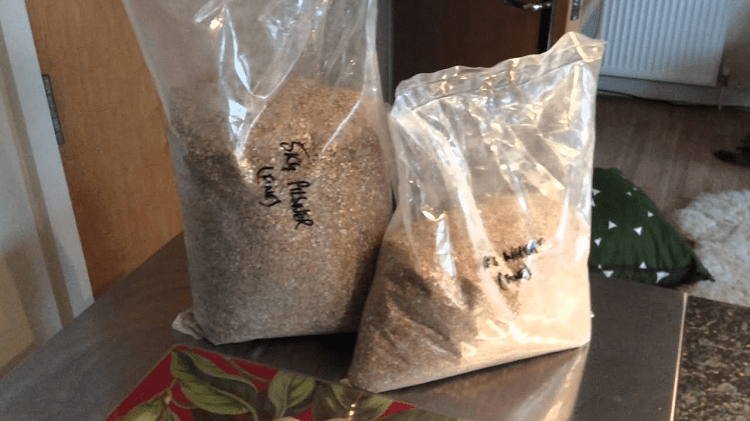
I have always deferred to Crisp Malt’s storage tips and have never had any issues, but as we all know, improper storage can lead to big and costly problems. Protect your investment, whether one pound or fifty-five pounds, by following a few straightforward storage rules.
If you’ve worked in the restaurant industry, you know all about FIFO or first in, first out. If you’re sitting on a big inventory of brown malt, always use the malt you purchased first.
Arguably more important than FIFO is storing your brown malt in a dry place. The hydroscopic nature of the malt means it will soak up any nearby moisture. I know that homebrewing can be messy sometimes, but always ensure your malt is put away in a waterproof bag or container before you start sloshing around. Speaking purely from experience.
Store malt bags on a slatted shelf. This ensures that airflow is continuously circling around your supply. When you place malt bags directly on the floor, the perfect conditions for moisture are created. The shelf will help keep it organized, insect free, and fresh.
Avoid storing brown malt in direct sunlight. Raising the temperature of the malt sends a clear signal to insects that their new home is ready.
If you aren’t planning to use the entire bag within three months, you should reseal that sucker pronto. Whether you use zip ties or duct tape or empty it into storage containers, anything is better than leaving it unsealed.
No odor, please. Remember when I said that malt was hydroscopic (meaning absorbent)? Well, it works the same with odors. If you’ve just repainted your garage and turned it into the perfect homebrew setup or invested money in an awesome epoxy floor, let those smells air out before returning malt to storage.
The ideal storage temperatures for brown malt are usually anywhere from 40 to 60 degrees Fahrenheit. Keeping the malt within this range will extend the shelf life. In addition to low temps, be sure to turn the bags over occasionally.
Consider rodents. Keep brown malt in a clean area. After all, it will be ingested in its final form, so food safety rules are at play here. Do not store malt sacks next to trashcans. You will also need to keep the floor clear of any mess and spillage.
Okay, that’s not so much to think about. Just don’t be gross, and keep it dry and cool.
FAQs
Question: What does Brown Malt Add to Beer?
Answer: Brown malt adds a dark roasted caramel and coffee flavor to beer. It is slightly bitter and nutty and gives the beer a warm brown color.
Question: Is Brown Malt Roasted?
Answer: Brown malt is roasted longer than amber malt, which it is commonly confused with due to its similarity in color. This additional roasting time allows for a more nutty flavor and a deeper brown color in brown ales.
Question: Is brown malt a crystal malt?
Answer: Brown malt is not a crystal malt. Additionally, it is not a caramel malt either. Crystal and caramel malts are stewed or saccharified, while brown malt is roasted. Other roasted malts include chocolate and black malt.
Question: How is Brown Malt Made?
Answer: In the early 1700s, the process of roasting brown malt was labor-intensive and artisan, to say the least. Today, the roasting process has been industrialized and simplified while achieving similar results. In a large rotating drum, malt is heated to 266 degrees Fahrenheit.

